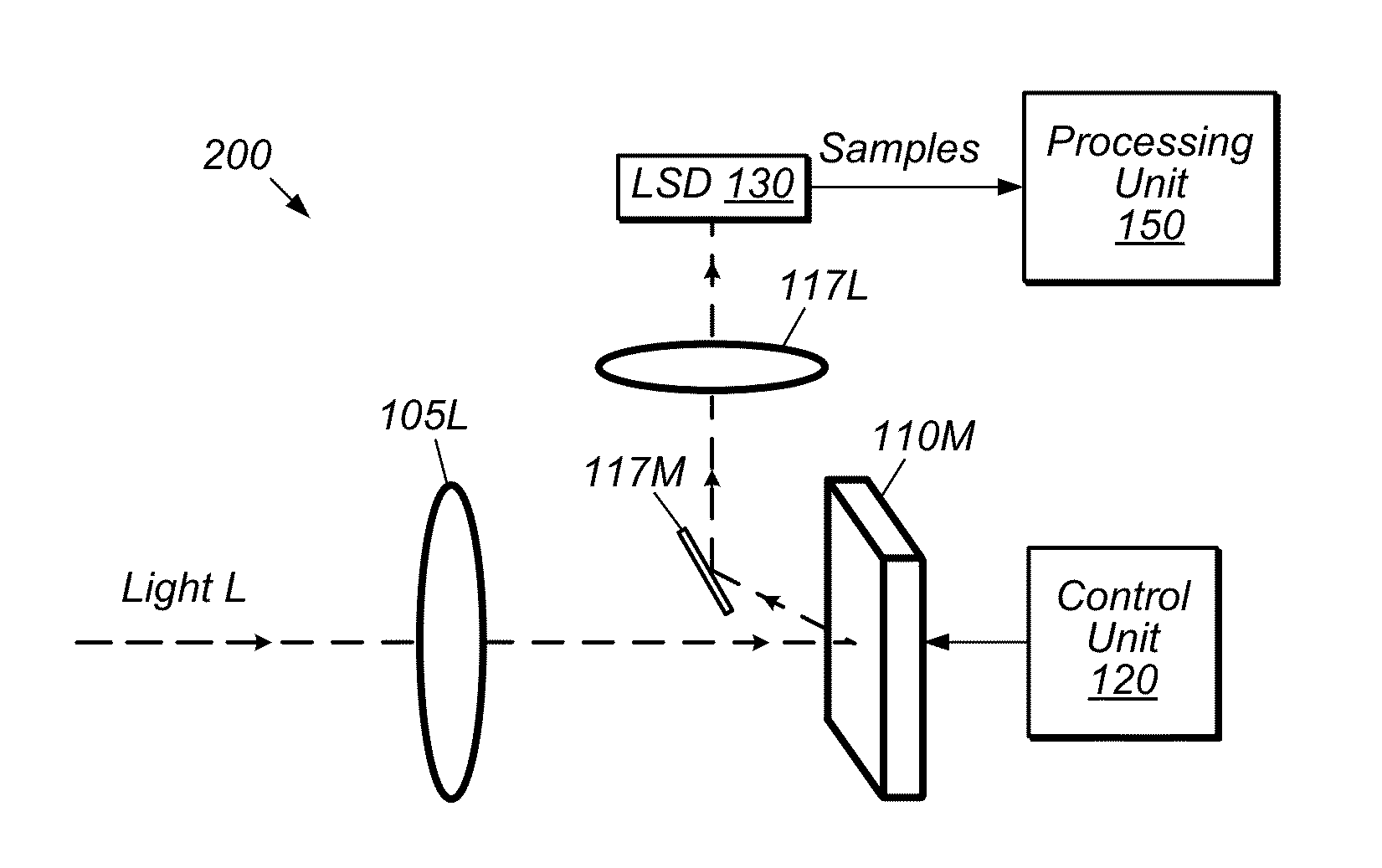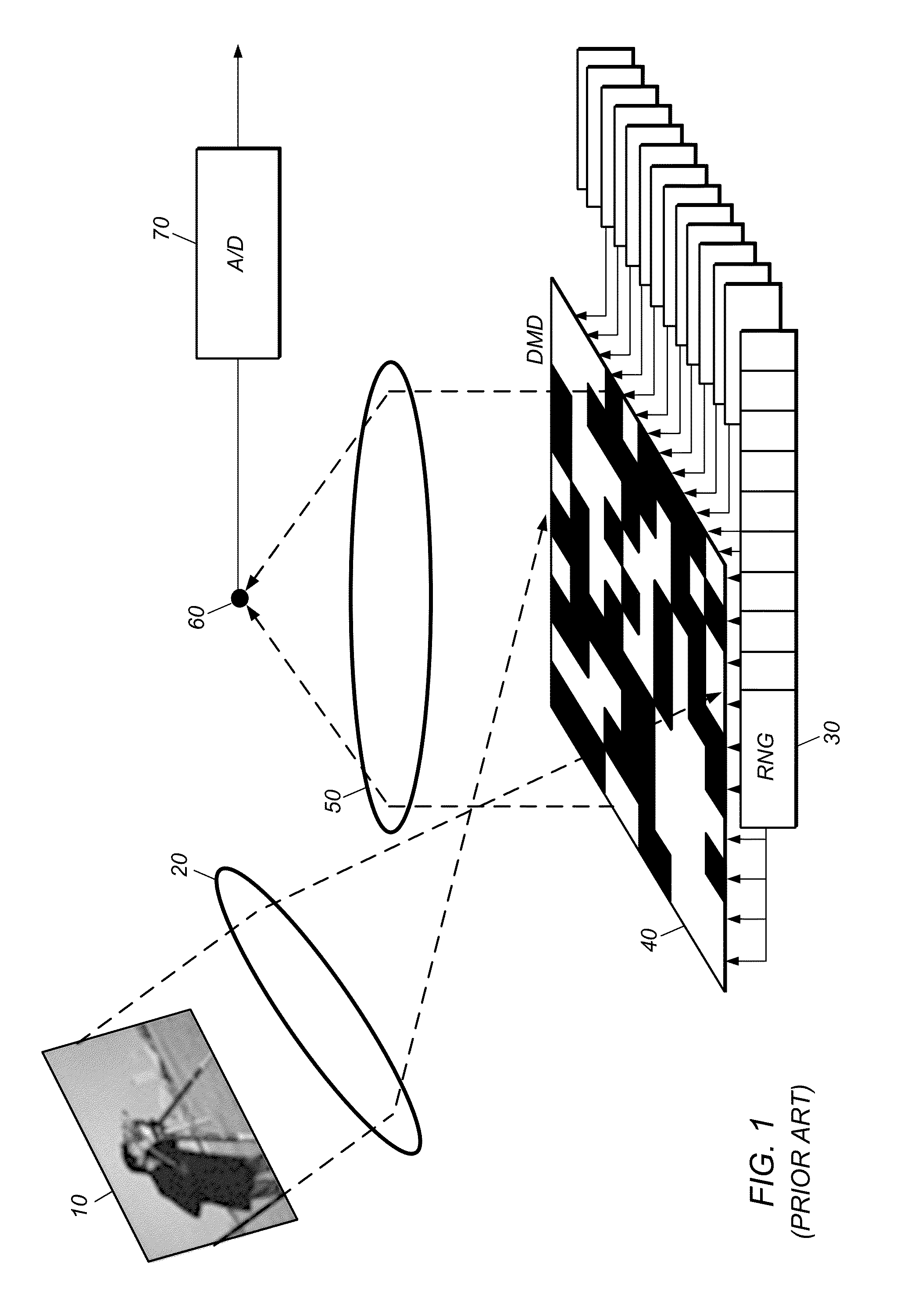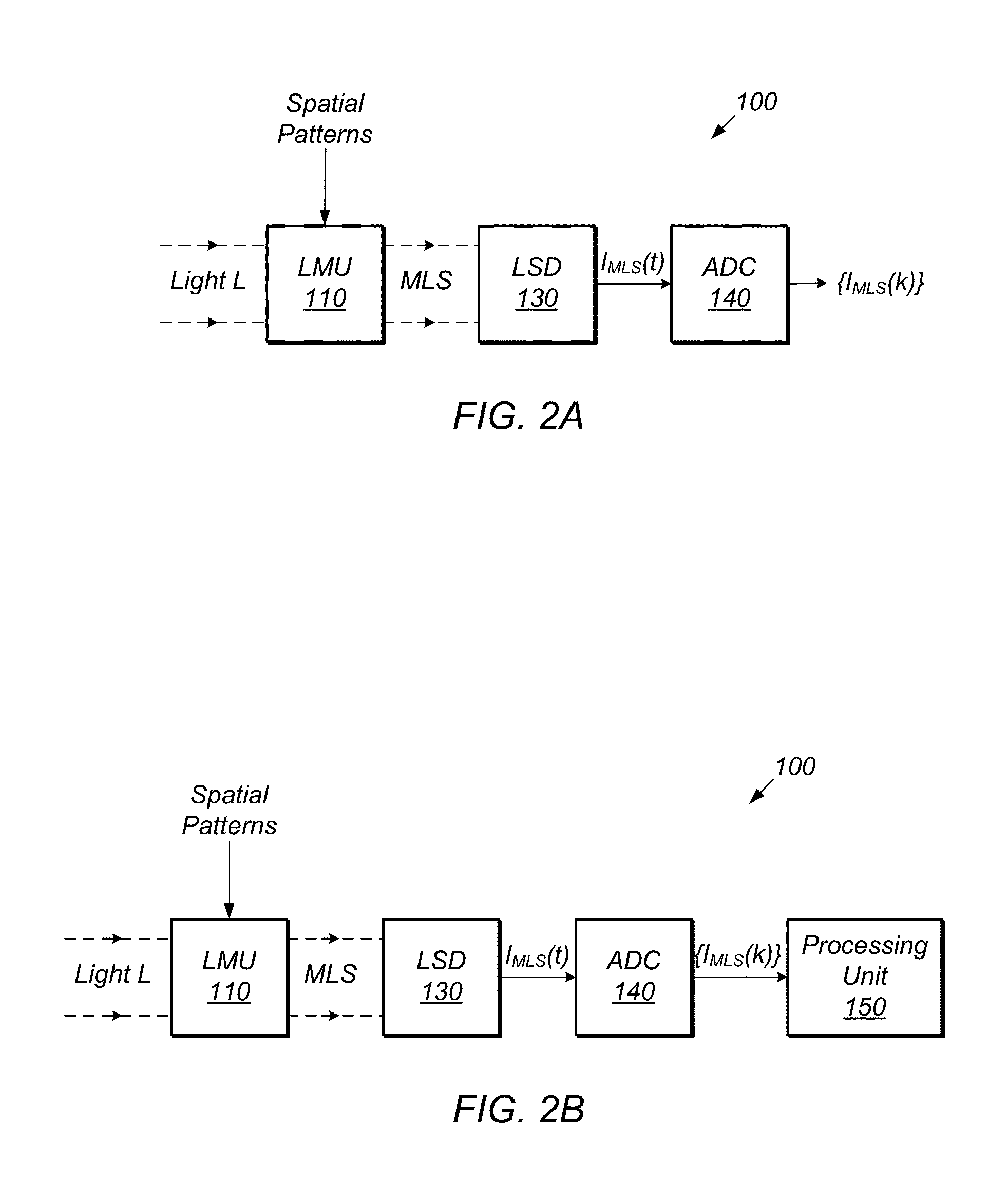Adaptive Search for Atypical Regions in Incident Light Field and Spectral Classification of Light in the Atypical Regions
a technology of incident light field and atypical regions, applied in the field of spectrometry, can solve the problems of large number of samples generated, affecting image reconstruction quality, and overwhelming data volum
- Summary
- Abstract
- Description
- Claims
- Application Information
AI Technical Summary
Benefits of technology
Problems solved by technology
Method used
Image
Examples
example
[0243]As an example, we executed Algorithm 1 on a simulated 128×128 HSI data cube containing a chemical plume and additive noise. FIG. 12 plots the SP-based RX output for a range of SP sizes. (Each drawing corresponds to the same field of view except for the bottom-right drawing, which is a close-up of the neighborhood of the chemical plume. A total of 80 spectral measurements were required to detect and estimate the position of the plume, which corresponds to a 204:1 compression ratio.
[0244]System with Spectral Sensor and Light Sensor at DMD Output Ports
[0245]In one set of embodiments, a system 1300 for classifying the wavelength spectrum of one or atypical (or anomalous) regions within an incident light stream may be configured as shown in FIG. 13. The system 1300 may include a light modulation unit 1310, a light sensing device 1315 (such as a photodiode), a spectral sensing device 1320 (such as a spectrometer) and a processing unit 1325. (Furthermore, the system 1300 may include ...
PUM
 Login to View More
Login to View More Abstract
Description
Claims
Application Information
 Login to View More
Login to View More - R&D
- Intellectual Property
- Life Sciences
- Materials
- Tech Scout
- Unparalleled Data Quality
- Higher Quality Content
- 60% Fewer Hallucinations
Browse by: Latest US Patents, China's latest patents, Technical Efficacy Thesaurus, Application Domain, Technology Topic, Popular Technical Reports.
© 2025 PatSnap. All rights reserved.Legal|Privacy policy|Modern Slavery Act Transparency Statement|Sitemap|About US| Contact US: help@patsnap.com



